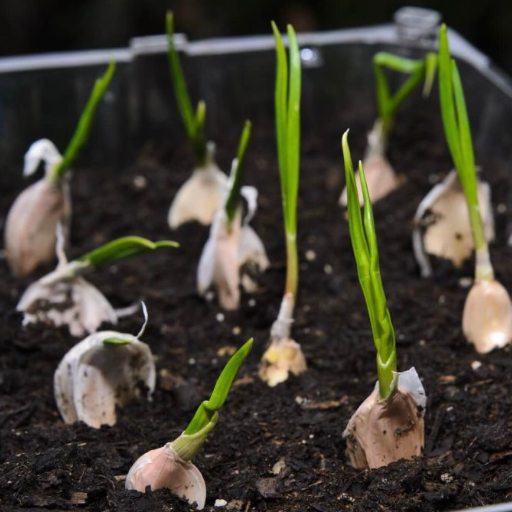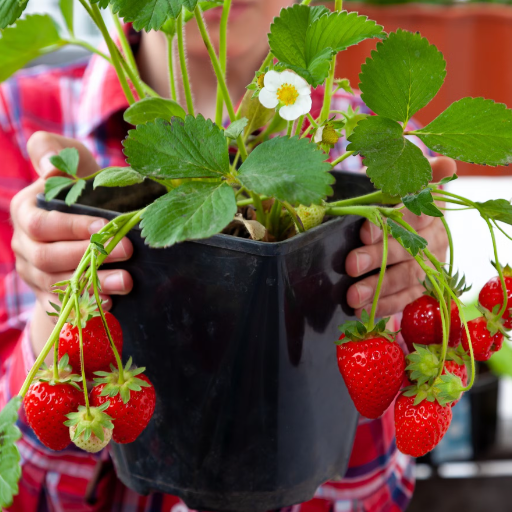Catnip is a beloved herb among feline lovers and horticulturists who tout the myriad virtues associated with this remarkable plant. From its aesthetic beauty to its pest-repellent qualities, catnip offers both joy for your cats and practical benefits for your garden. This comprehensive guide will walk you through everything you need to know about how to grow catnip, growing and maintaining catnip successfully.
Understanding Catnip: The Basics

Catnip (Nepeta cataria) is a perennial herb from the mint family, famous for its ability to trigger sensory euphoria in cats through a compound called nepetalactone. Beyond its feline appeal, catnip serves multiple practical purposes in the garden and home.
What Makes Catnip Special?
- Active Compound: Nepetalactone in leaves and stems creates the famous feline attraction
- Human Benefits: Can be brewed into calming teas for relaxation
- Garden Benefits: Acts as a natural pest deterrent
- Easy Growing: Thrives in various conditions with minimal maintenance
Key Benefits of Growing Catnip
| Benefit Category | Specific Advantages |
|---|---|
| For Cats | Fresh entertainment, stress relief, natural stimulation |
| For Humans | Calming herbal tea, natural pest control, aromatherapy |
| For Gardens | Attracts pollinators (bees, butterflies), repels mosquitoes, aphids, cockroaches |
| Maintenance | Low-maintenance, drought-tolerant once established, self-sufficient |
Popular Catnip Varieties
Nepeta Cataria (True Catnip)
The classic variety with the strongest appeal to cats due to high nepetalactone content. Best choice for cat owners and traditional uses.
Nepeta Mussinii (Persian Catmint)
Valued more for decorative purposes with larger purplish flowers. Excellent for ornamental gardens.
Nepeta Faassenii (Faassen’s Catmint)
Hardy and drought-tolerant variety, perfect for landscaping and areas with challenging growing conditions.
Getting Started: Preparation and Planning

Choosing the Perfect Location
Essential Location Criteria:
- Full sun exposure (minimum 6 hours daily)
- Well-draining soil (water shouldn’t pool after rain)
- Good air circulation to prevent fungal diseases
- Space for mature plant spread (18-24 inches between plants)
Soil Requirements
| Soil Characteristic | Ideal Condition | Notes |
|---|---|---|
| Drainage | Well-draining | Amend heavy clay with sand or compost |
| pH Level | 6.1 – 7.8 | Slightly acidic to neutral |
| Fertility | Moderately fertile | Avoid over-fertilizing – catnip prefers lean soil |
| Texture | Loamy preferred | Sandy to clay acceptable with amendments |
Essential Gardening Tools
- Pruning Shears: For harvesting and maintaining plant shape
- Hand Trowel: For planting and transplanting
- Garden Fork: For soil aeration and breaking up compacted areas
- Watering Can or Adjustable Hose: For controlled moisture application
- Garden Gloves: For hand protection during maintenance
How To Grow Catnip: Step-by-Step Methods

Method 1: Growing from Seeds
Indoor Seed Starting (Recommended):
- Start seeds indoors 4-6 weeks before last frost
- Use quality seed-starting mix
- Press seeds lightly into soil surface (don’t cover completely – they need light to germinate)
- Keep soil consistently moist
- Place in sunny location or under grow lights
- Expect germination in 7-10 days
- Transplant outdoors after last frost when seedlings are 2-3 inches tall
Direct Sowing:
- Sow seeds directly in garden after last frost
- Plant ? inch deep, 18-24 inches apart
- Keep soil moist until germination (7-14 days)
- Thin seedlings to ensure proper spacing
Method 2: Planting Seedlings
- Choose location with well-draining soil and full sun
- Prepare soil by loosening and removing weeds
- Dig holes slightly larger than root ball
- Space plants 12-18 inches apart
- Water gently after planting
- Apply light mulch to retain moisture and suppress weeds
Catnip Plant Care and Maintenance

Watering Guidelines
- Establishment Phase: Water regularly until plants are well-established
- Mature Plants: Water only when top inch of soil feels dry
- Container Plants: Check soil moisture more frequently
- Seasonal Adjustments: Reduce watering in fall and winter
Fertilization Strategy
Less is More Approach:
- Apply balanced, all-purpose fertilizer once at beginning of growing season
- Avoid over-fertilizing – it weakens plants and reduces essential oil concentration
- For container plants, use diluted fertilizer solution
- Organic compost addition in spring is usually sufficient
Pruning and Maintenance
- Regular Pruning: Promotes bushier growth and prevents woodiness
- Deadheading: Remove spent flowers to encourage continued growth
- Harvest Pruning: Cut stems just above leaf nodes for regrowth
- Fall Cleanup: Cut back to 3-4 inches before winter
Common Problems and Solutions
| Pest | Signs | Treatment |
|---|---|---|
| Aphids | Small green/black insects on stems and leaves | Spray off with water; use insecticidal soap if severe |
| Spider Mites | Fine webbing, yellow stippling on leaves | Increase humidity; spray with neem oil |
| Flea Beetles | Small holes in leaves | Remove debris around plants; use row covers if needed |
Disease Prevention
- Powdery Mildew: Ensure good air circulation; remove affected leaves
- Root Rot: Improve drainage; avoid overwatering
- Prevention Tips: Proper spacing, avoid overhead watering, remove plant debris
Harvesting and Using Your Catnip

When to Harvest
Optimal Timing: Harvest when plants are in full bloom (mid to late summer) for maximum essential oil concentration.
Best Practices:
- Harvest after morning dew has dried
- Cut stems halfway down, just above leaf nodes
- Use clean, sharp pruning shears
- Can harvest multiple times per season
Drying and Storage
- Drying: Hang stems upside down in cool, dark, well-ventilated area
- Processing: Remove leaves and flowers from stems when crisp
- Storage: Store in airtight containers in dark cupboard
- Duration: Properly stored catnip maintains potency for up to one year
Uses for Your Catnip Harvest
For Cats
- Sprinkle dried leaves on scratching posts and toys
- Stuff into cat toys for interactive play
- Fresh leaves can be offered directly (in moderation)
For Humans
- Herbal Tea: Steep 1 teaspoon dried leaves for calming effect
- Natural Pest Repellent: Place dried leaves around problem areas
- Garden Companion: Plant near vegetables to deter pests
Container Growing Tips
- Choose containers at least 12 inches deep
- Use well-draining potting mix
- Water when the top inch of soil is dry
- Fertilize monthly during the growing season with a diluted solution
Bring indoors before the first frost in cold climates
References
-
Bonnie Plants:?How to Grow Catnip Plants in Your Garden or Indoors?– This guide covers planting tips, spacing, and soil improvement for growing catnip.
-
The Spruce:?How to Grow Catnip Plants?– Offers insights on sunlight requirements, growth habits, and care for catnip plants.
-
UF Seeds:?From Seed to Harvest: A Beginner’s Guide to Growing Catnip?– Provides a step-by-step guide from planting seeds to harvesting catnip, including watering and sunlight needs.
Frequently Asked Questions (FAQ)
How do I grow catnip from seed?
To grow catnip from seed, start by selecting a sunny location as catnip grows best in full sun. You’ll want to prepare the soil, ensuring it’s well-draining, sandy, or even poor soil, as catnip thrives in less fertile conditions. Sow the catnip seeds about ? inch deep and 18 to 24 inches apart. Water the area lightly and maintain soil moisture until germination occurs, which typically takes 7 to 14 days. Once the seedlings have developed, thin them to ensure good air circulation around each plant. This will help prevent issues with pests and diseases.
What is the best way to care for the catnip plant?
Catnip plant care involves regular watering, especially during dry spells, ensuring that the soil remains moist but not waterlogged. Fertilization isn’t necessary, as catnip grows best in poor soil. Prune the catnip leaves regularly to promote bushier growth and prevent the plant from going to seed too early. Keep an eye out for pests that may attack the foliage; beneficial insects can help control these naturally. If you’re growing your catnip indoors or in containers, make sure it gets at least 6 hours of sunlight each day and consider rotating the pot to ensure even growth.
When is the right time to harvest catnip?
The best time to harvest catnip is just before it flowers when the plant is at its peak potency. This usually occurs in late spring through early summer. Use sharp scissors or pruning shears to cut the stems back to about 3 inches long, taking care not to remove more than one-third of the whole plant at a time. After harvesting, you can dry catnip by hanging the stems upside down in a dark, cool place with good air circulation. Once dried, store the catnip in an airtight container to preserve its flavor and aroma for your cats.
Can catnip also be grown in containers?
Yes, catnip can also be grown in containers, making it a great option for gardeners with limited space. Choose a small pot with good drainage and fill it with a sandy potting mix. Plant the seeds or seedlings in the pot, ensuring they’re spaced adequately to allow for growth. Water the container consistently, but be careful not to overwater, as this can lead to root rot. Container-grown catnip should be placed in a sunny location, and you may need to rotate the pot to ensure all sides receive equal sunlight. Remember, cats can enjoy catnip fresh or dried, so having it handy in a pot can be beneficial for indoor cats.
What pests should I watch for while growing catnip?
While growing the catnip plant, you may encounter several common pests. Aphids and spider mites can become problematic, especially in indoor or container settings. Keeping the plants healthy through good air circulation and proper watering can help deter these pests. If you notice any signs of infestation, consider using insecticidal soap or introducing beneficial insects that naturally prey on these pests. Regularly inspecting the foliage for signs of wilting or discoloration can help you catch any issues early. Maintaining a diverse garden can also enhance pest control, as it attracts beneficial insects to your catnip plants.








